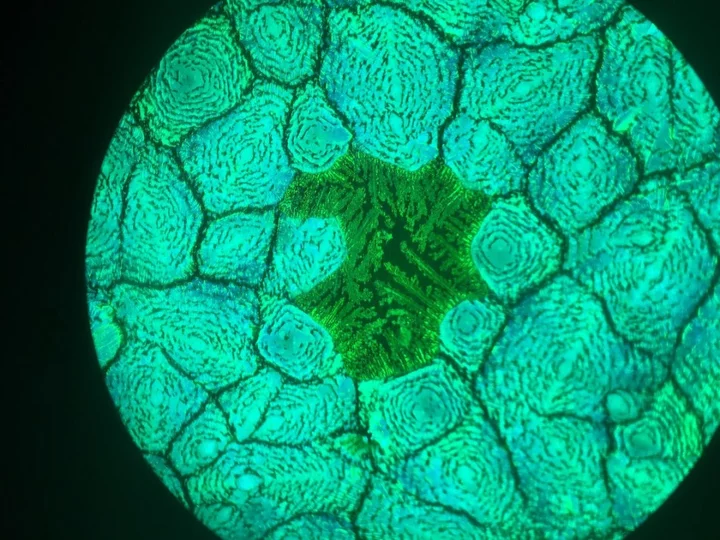A startup in China is set to begin production of ultra-efficient solar panels that are made from the so-called “miracle material” perovskite. The next-generation solar cells will be manufactured at half the cost of traditional silicon cells, with 50 per cent greater efficiency, according to researchers from Nanjing University who made the design breakthrough that made mass production possible. “The raw materials for making perovskite cells are cheap and abundant, making the production costs of these cells just one 20th of traditional solar cells,” Professor Tan Hairen from Nanjing University, told state media. “Moreover, they are easier to produce and can be made in a single factory. Even with other items added, the overall cost of production is only half of that of traditional silicon cells.” Professor Tan has created a startup called Renshine Solar to move forward with commercialisation of the technology, and has already signed a government deal to build a production line in Jiangsu province this summer. The factory is expected to achieve a capacity of 150 megawatts by September, according to the South China Morning Post, with the perovskite solar panels built for use on roofs, walls, or placed on electric cars to improve their range. The perovskite solar cells (PSCs) are capable of retaining over 90 per cent of their initial performance after 600 hours of continuous operation, the team noted, making them suitable for commercial use. The researchers said the next-generation solar cells could also be used in applications ranging from building-integrated panels to space-based electricity generation. “With their lower fabrication cost, low-temperature solution processability, roll-to-roll manufacturing, and wide-bandgap tunability, PSCs have the potential to become the candidate of choice for high-efficiency tandem solar cells,” they wrote in a study detailing the new design that will enter production. “Considering the rapid progress in photovoltaic performance, PSCs have been considered to be ideal candidates for integrating with other systems to realise new innovative technologies.” The study, titled ‘Next-generation applications for integrated perovskite solar cells’, was published in the scientific journal Nature. Its publication comes just one month after a South Korean firm announced that it was aiming to commercialise tandem perovskite solar cells following a $100 million investment to fund a pilot production line next year. Read More Scientists break world record for solar power window material Electric cars could save more than 100,000 lives, study claims Solar trees offer unique solution to charging electric cars College students who cut social media use have less anxiety
A startup in China is set to begin production of ultra-efficient solar panels that are made from the so-called “miracle material” perovskite.
The next-generation solar cells will be manufactured at half the cost of traditional silicon cells, with 50 per cent greater efficiency, according to researchers from Nanjing University who made the design breakthrough that made mass production possible.
“The raw materials for making perovskite cells are cheap and abundant, making the production costs of these cells just one 20th of traditional solar cells,” Professor Tan Hairen from Nanjing University, told state media.
“Moreover, they are easier to produce and can be made in a single factory. Even with other items added, the overall cost of production is only half of that of traditional silicon cells.”
Professor Tan has created a startup called Renshine Solar to move forward with commercialisation of the technology, and has already signed a government deal to build a production line in Jiangsu province this summer.
The factory is expected to achieve a capacity of 150 megawatts by September, according to the South China Morning Post, with the perovskite solar panels built for use on roofs, walls, or placed on electric cars to improve their range.
The perovskite solar cells (PSCs) are capable of retaining over 90 per cent of their initial performance after 600 hours of continuous operation, the team noted, making them suitable for commercial use.
The researchers said the next-generation solar cells could also be used in applications ranging from building-integrated panels to space-based electricity generation.
“With their lower fabrication cost, low-temperature solution processability, roll-to-roll manufacturing, and wide-bandgap tunability, PSCs have the potential to become the candidate of choice for high-efficiency tandem solar cells,” they wrote in a study detailing the new design that will enter production.
“Considering the rapid progress in photovoltaic performance, PSCs have been considered to be ideal candidates for integrating with other systems to realise new innovative technologies.”
The study, titled ‘Next-generation applications for integrated perovskite solar cells’, was published in the scientific journal Nature.
Its publication comes just one month after a South Korean firm announced that it was aiming to commercialise tandem perovskite solar cells following a $100 million investment to fund a pilot production line next year.
Read More
Scientists break world record for solar power window material
Electric cars could save more than 100,000 lives, study claims
Solar trees offer unique solution to charging electric cars
College students who cut social media use have less anxiety









